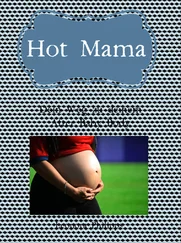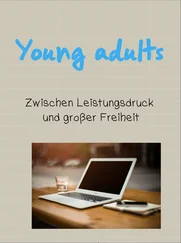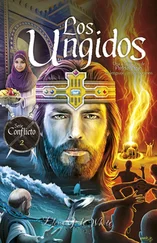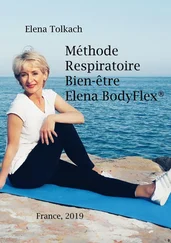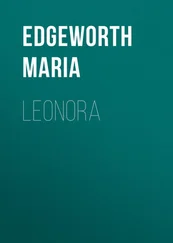‘Recently,’ Leonora confides in her, ‘I had a terrifying nightmare: I am dead and obliged to bury my own corpse. As it starts to decompose, I decide to embalm it, so I order it to be paid for on arrival at my house on the Calle Chihuahua. When the coffin is delivered, I am so shocked by the sight of myself that I refuse to pay the charge and I send it back.’
‘It’s as if one would refuse to pay the price for a life; in the end, what a relief not to have to occupy ourselves with our own funeral preparations!’ Remedios concludes.
Influenced by her readings on Gurdjieff, Remedios paints Rupture. The main personage is fleeing a house with six windows, and out of each there leans a face identical to her own: ‘They are my multiple selves and I shed each one as I came to know myself,’ she explains.
During the course of the week, Leonora encounters Fremantle again and finds him seductive.
‘How do you feel about the retreat you made with my friend Rodney Collin Smith?’
‘Fine, apart from the fact that my head is dancing with Tlalpan, Gurdjieff, Ouspensky and the Ten Commandments; not to mention the scanty rations awarded us at mealtimes throughout the week I’ve spent in the shadow of his lectures.’
‘I am sure you have learnt something.’
‘As of now I want to learn from you, as I am interested in your theories regarding colour. I have been told you know all about red, blue and yellow.’
On returning to the Calle Chihuahua, she calls out to her husband:
‘Chiki, come out of your cave, I’ve prepared a delicious dinner!’ Chiki obeys. ‘In spite of everything, that retreat at Peña Pobre gave me a sense of peace I have never known before,’ she tells Chiki.
‘Let’s just see how long it lasts.’
WOLFGANG PAALEN, FINDING HIMSELF without means and on to his third marriage (this time to Isabel Marín, sister to Lupe), determines to sell off some of his prehispanic artefacts. As he can no longer cope with the dangers associated with this contraband, he turns to drugs and alcohol to reduce his anxieties. A follower of Schopenhauer, for whom the most intelligent solution is to give up on life altogether, he takes the lesson literally to heart.
Paalen commits suicide in Taxco on 24th September 1959. He selects his hotel, pays in advance, and even adds a generous tip. His final Self-portrait shows his face with its features faded to vanishing point, immersed in candle smoke in a technique he calls fumage.
‘Suicides throw me completely, for to me nothing is superior to the spectacle of life,’ says his patron and companion Eva Sulzer, and bursts into tears.
‘How ironic. Years ago he made a pistol out of bones,’ Remedios recalls. ‘Breton’s homage to him in his magazine, Medium , was a timely one.’
‘I would never consider killing myself,’ is Leonora’s contribution. ‘I am always too curious to know what might happen tomorrow.’
‘Well I do at least understand those who commit suicide,’ Remedios adds compassionately.
‘And I don’t. In the end, we spend more time dead than alive,’ Leonora concludes.
‘Ah well,’ Alice attempts to comfort herself, ‘at least he enjoyed life.’
‘Was he bisexual?’ Remedios asks.
‘He was trisexual,’ answers Eva, who knows most about it.
Eva and Alice console one another. Alice has recourse to her painting, Eva to her photography and her Swiss fortune. Both of them analyse Paalen, and take time to consider the ways of the unconscious. Their relationship with him was above all psychological. After all, both were his wives, Eva more so than Alice, since she was the strongest member of the triad.
Eva Sulzer burns with a passion for Jung and talks about him at parties. ‘He is one of the greatest doctors of all time.’ Remedios and Leonora recognise themselves through his interpretations of dreams.
‘Jung says our dreams are a fount of self-knowledge. The lies we live by can be revealed to us in our dreams. It seems as if the unconscious is a sort of Cerberus guarding the entrance, whom we can never get past. In addition to all this, it’s in no way possible to understand Surrealism without psychoanalysis.’
‘I can’t dream any more,’ Kati alleges. ‘I’m working too hard.’
At the age of twenty, Eva decided to travel to New York to undertake analysis with Jung but it was essential to book the appointment a year in advance. Thus the Swiss psychoanalyst lost the chance to know a beautiful and intelligent woman who turned every head in a room when she entered, with her own head held high. Eva, Leonora, Remedios and Alice Rahon are all obsessed, like Jung, by occult phenomena. They recount their dreams to one another. Very soon Kati, Remedios and Leonora leave the group because Alice wants to discuss the psychic origins of schizophrenia and Eva Sulzer prefers to go on about how badly Paalen behaved and how his conscience must have tormented him. A great admirer of Remedios, she longs to know what the subject of her next painting will be. Leonora keeps a hermetic silence on the subject of all her work in progress. She insists on striving for a truth that will bring her happiness. ‘I want to become a “person”, the highest form of a human being.’ Remedios, too, takes to psychoanalysis, along with her husband Walter Gruen, who in all things does as she wishes. In contrast, Chiki has no idea how to protect his wife.
‘Whatever induced the serpent to grow feathers?’ Leonora asks.
‘Ay Leonora, do leave Quetzalcoatl in peace just this once!’
‘The truth is I’m talking about a nameless force that operates on the psyche and can work miracles.’
‘Work is the best psychologist,’ Kati insists.
‘Have you never undertaken psychoanalysis?’
‘War psychoanalysed me, and now the one thing I know is that if I don’t get out of bed in the morning, no-one will do so for me.’
Eva Sulzer, the know-all, gets irritated:
‘Leonora, you go to your sessions in order not to discover yourself; most people go along just to be like everyone else, even if their conformity brings them to a type of slavery and ultimately they reach the point of destruction.’
‘I want to know myself; to find my inner truth!’ Leonora refutes her.
‘The day when that happens you’ll stop painting.’
‘The Red Queen told Alice that in order to go faster she had to run backwards.’
‘Is that what your psychoanalysis is all about?’
‘Yes, and I live it out in Clayton Green, Lancashire, on my father’s arm.’
‘What’s going on, Leonora, is that you are attemping to assume your father’s role.’ Eva Sulzer intercepts, convinced that she should be the psychoanalyst here.
‘How can I do that if I am his total antithesis?’ asks Leonora, offended.
‘You are actually quite like him: authoritarian and busily trying to ensure that everyone depends on you! Maybe that’s the reason why you have always felt persecuted by him.’
‘That’s a lie!’ yells Leonora.
Alice Rahon comes to her defence:
‘Leonora’s great virtue is the curiosity which crucifies her and, if we all had it too, the mysteries of the spirit would be revealed to us all.’
‘I’d rather the mysteries of the digestive system were revealed to me,’ responds Leonora.
‘When the artist encounters himself, he is lost. Artists’ sole ambition is to never confront themselves,’ Alice persists.
‘If you meditate for forty minutes every day, you’ll be stimulating your hormones,’ Leonora is quick to point out.
‘What?’ asks Eva, open-mouthed.
‘Forgive me, I meant to say neurons,’ Leonora adds, by way of an apology.
Читать дальше


